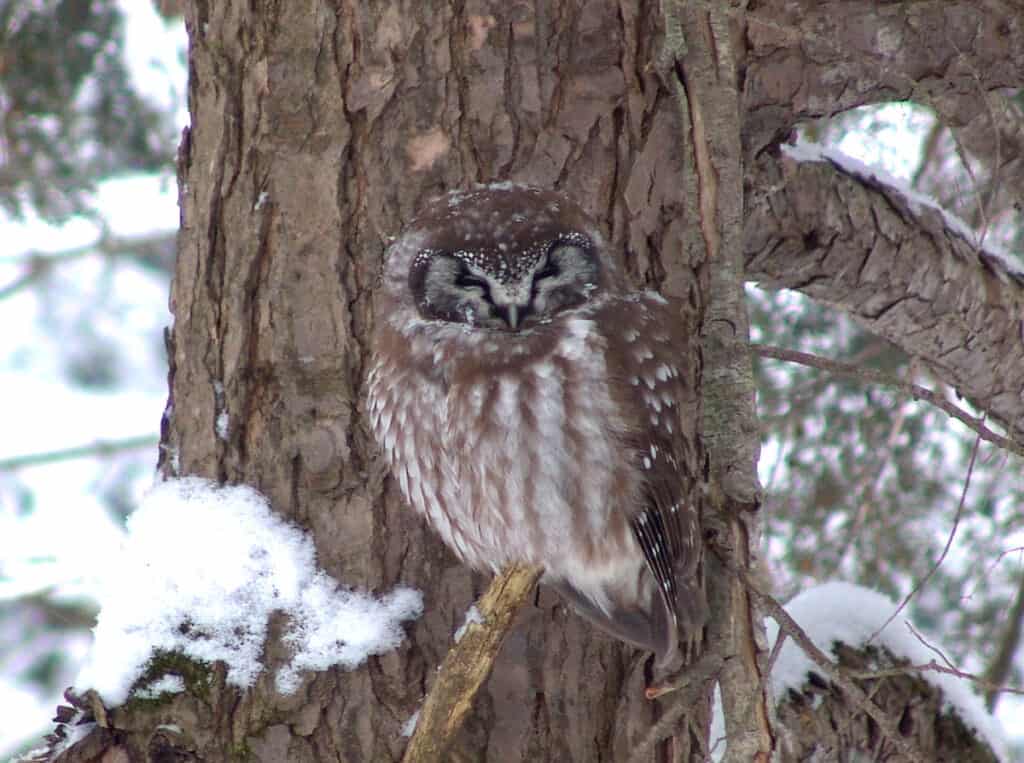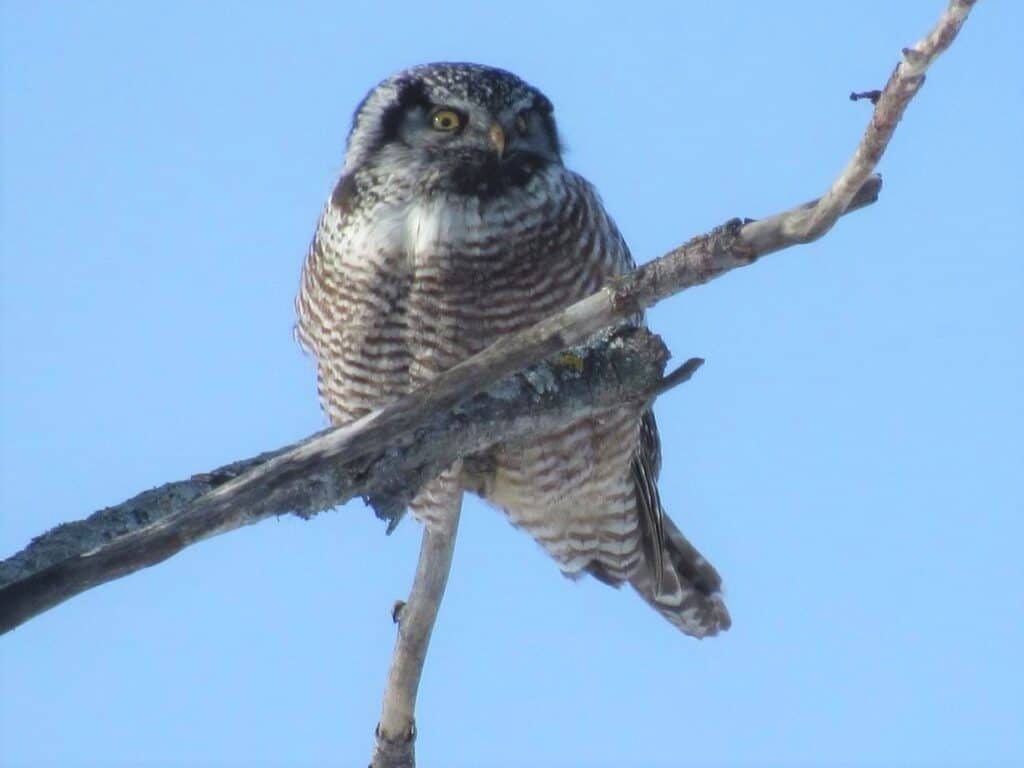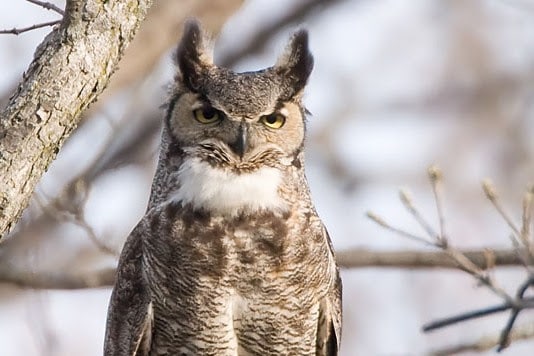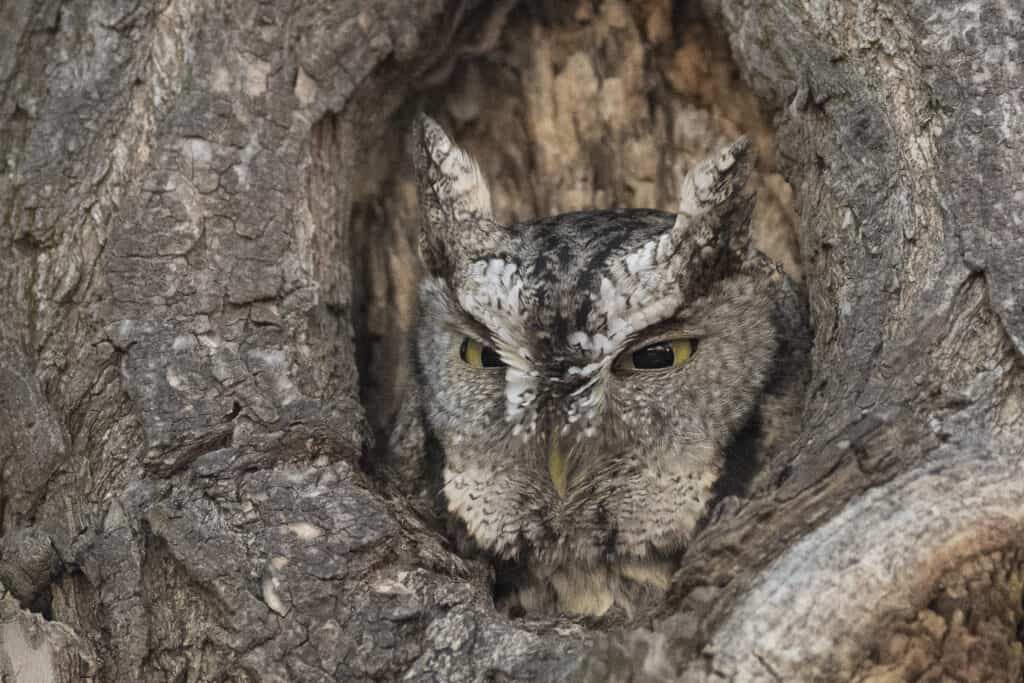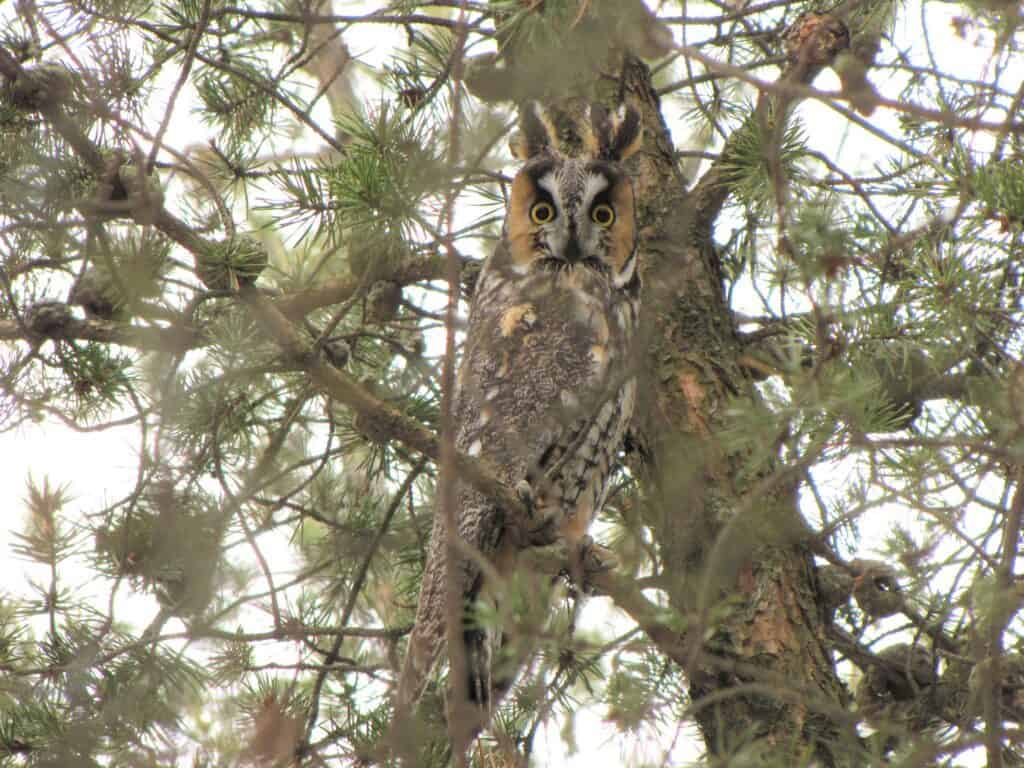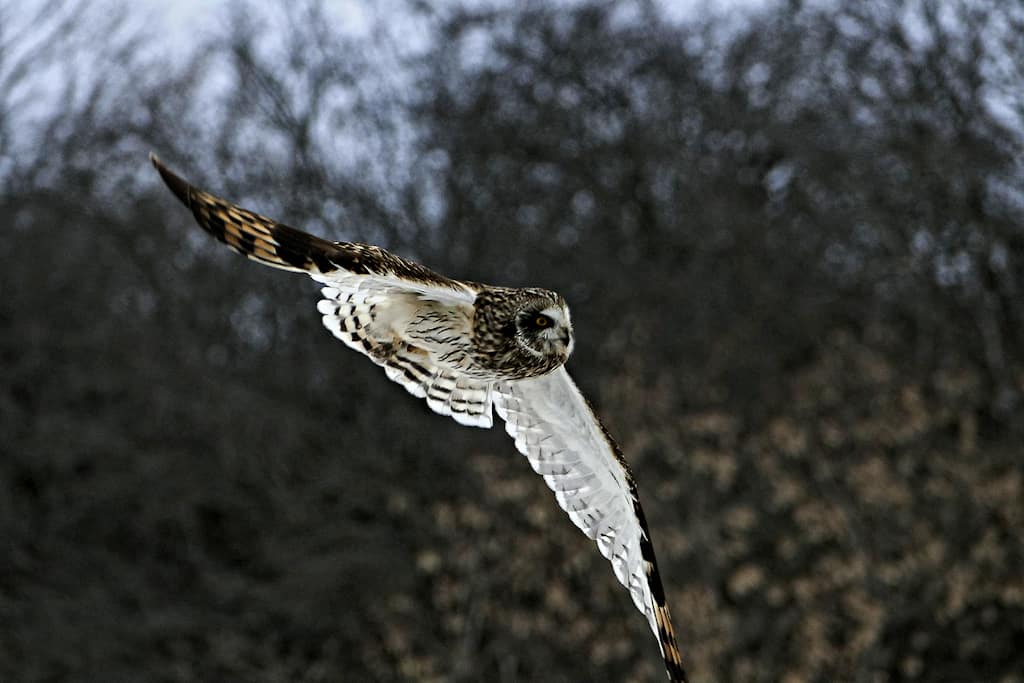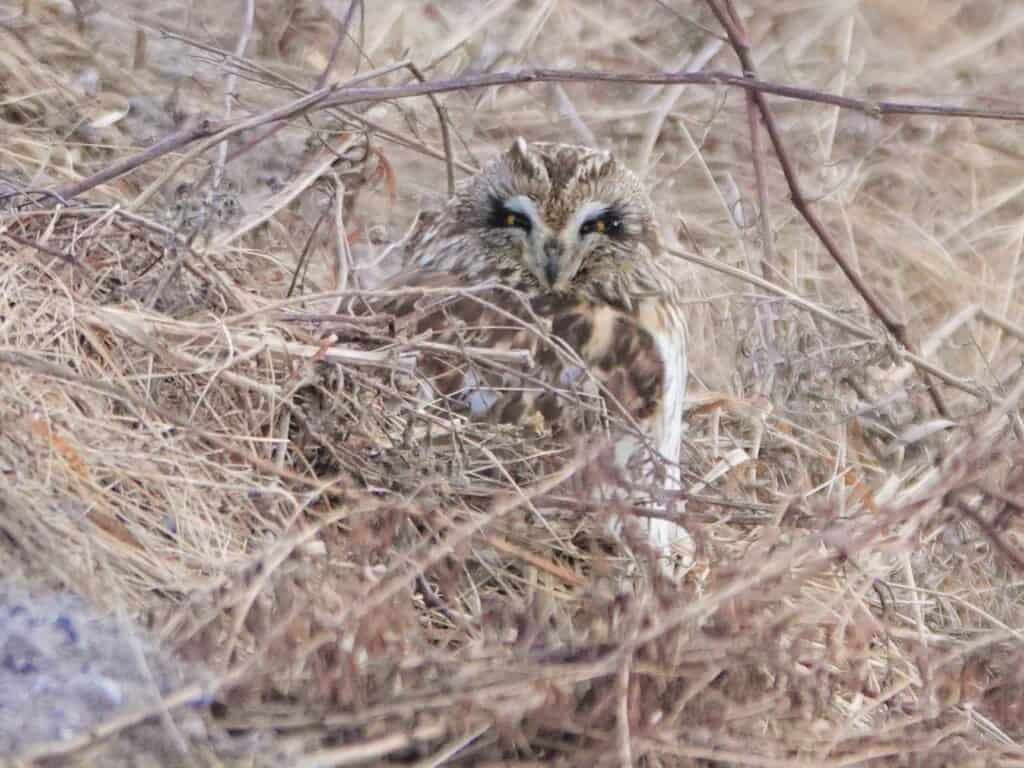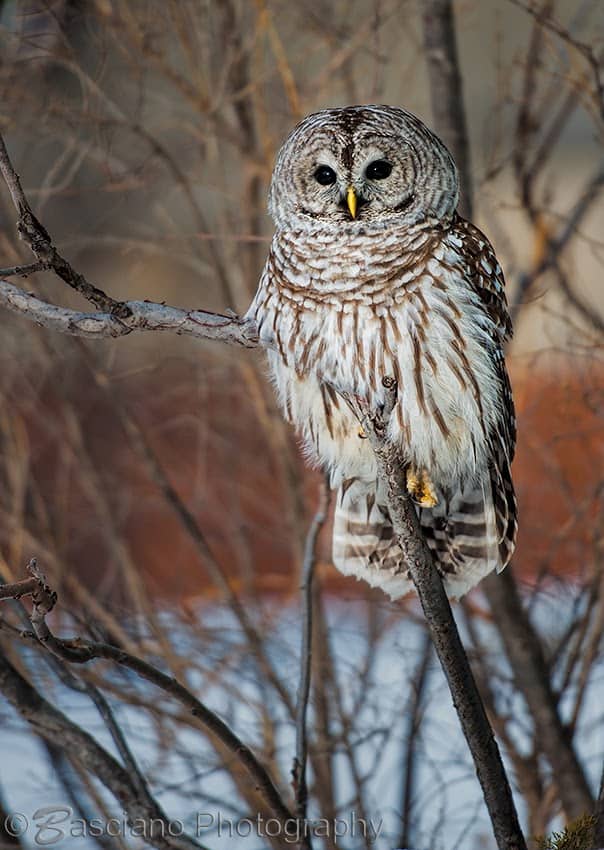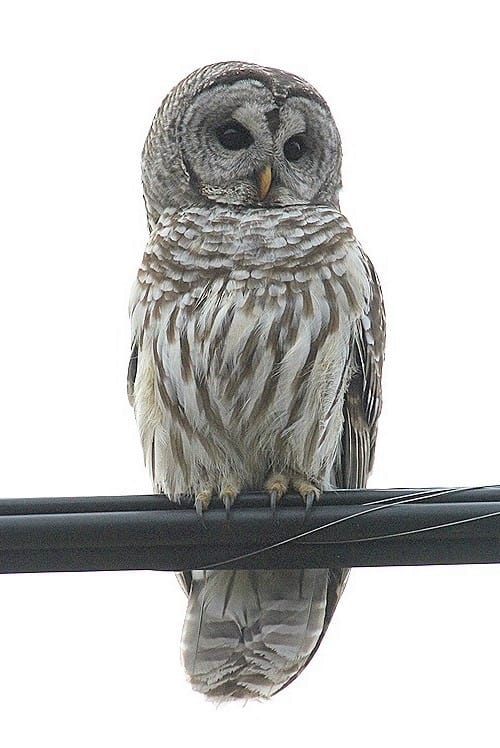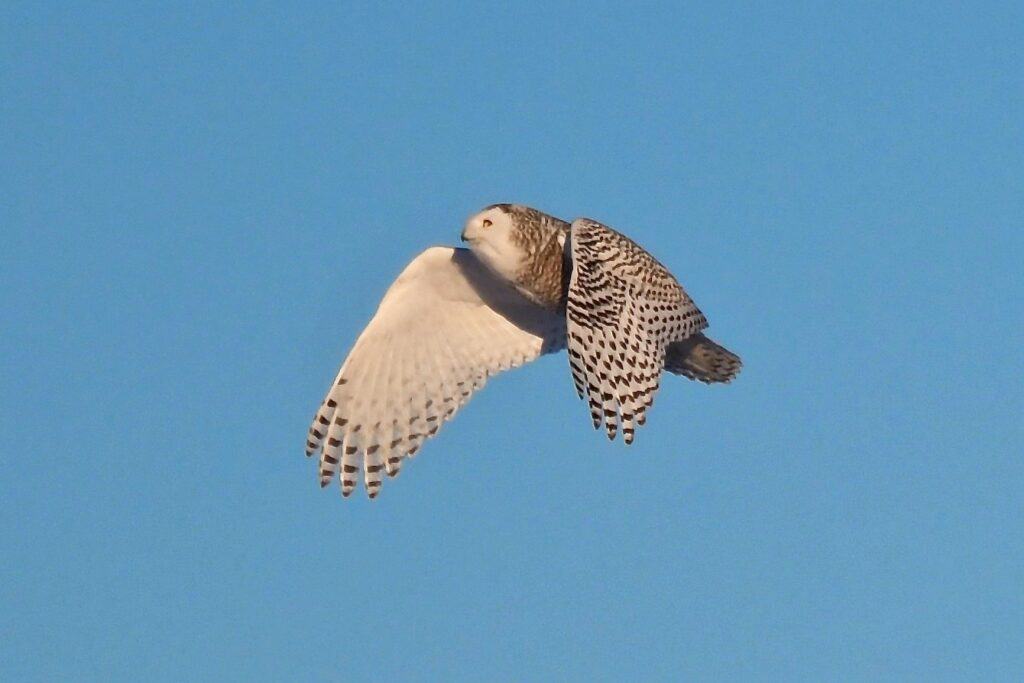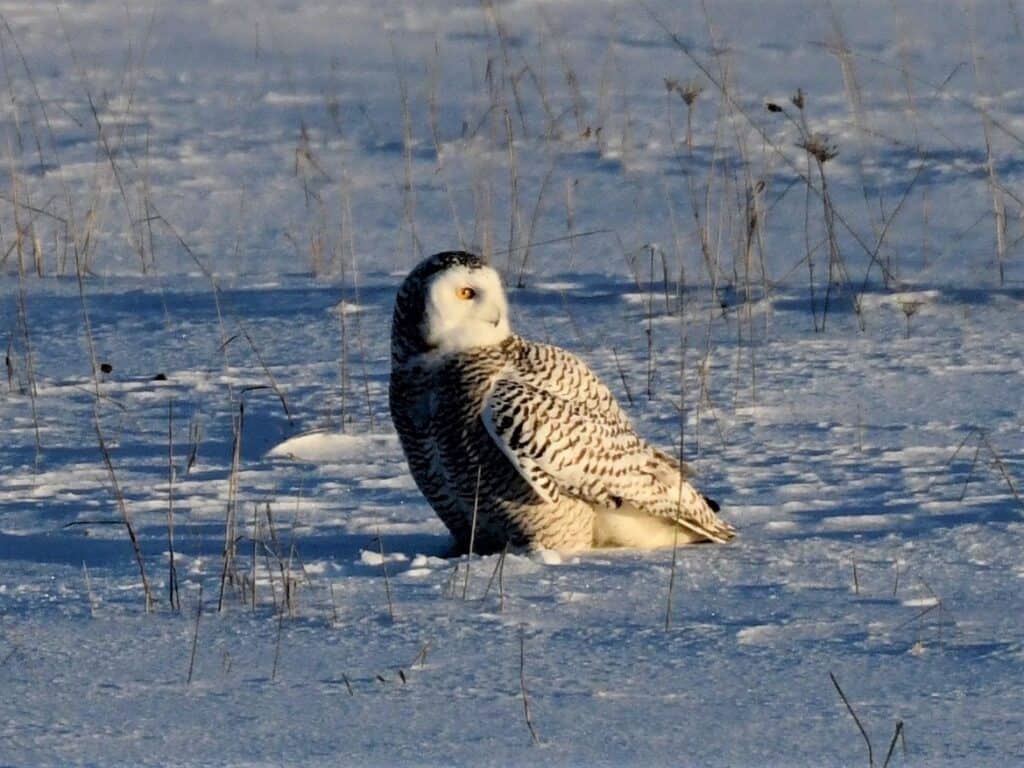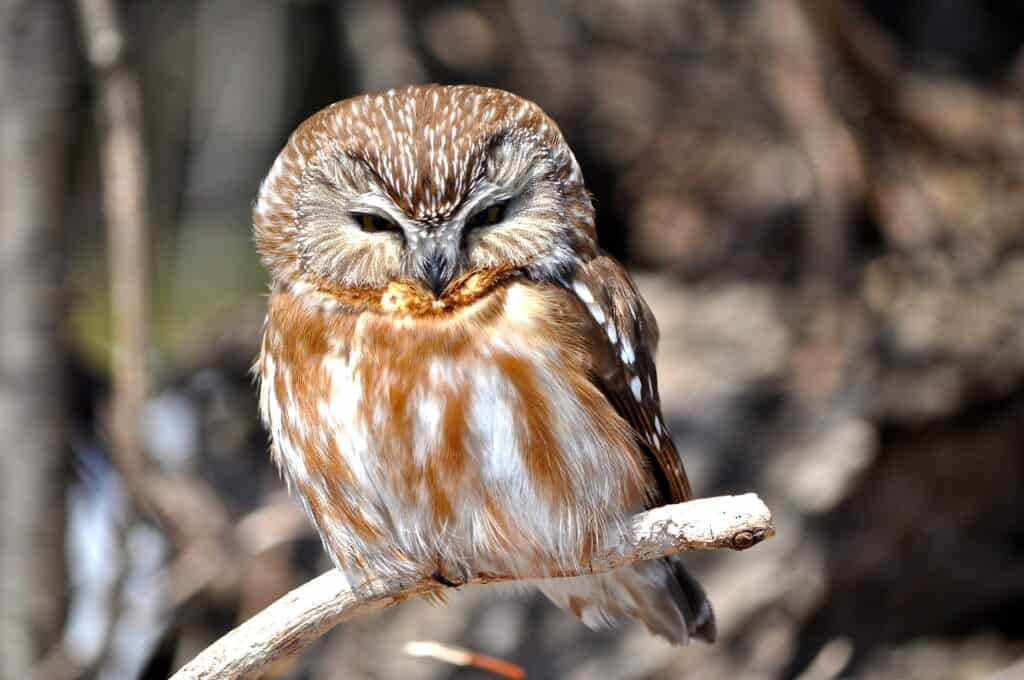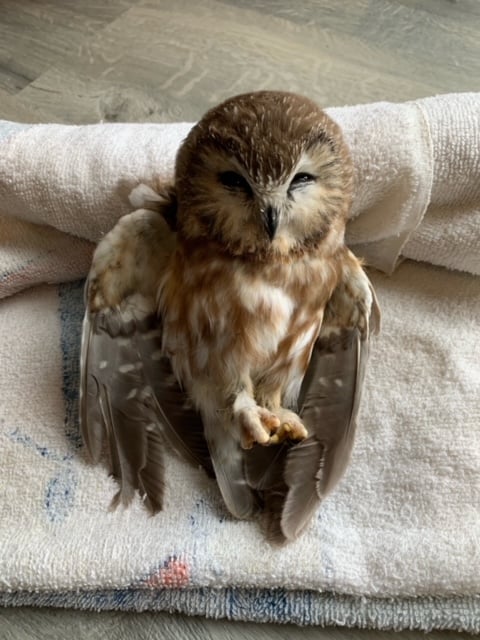(Peterborough Examiner – March 5, 2021)
Higher-than-usual owl numbers are thrilling people throughout the Kawarthas
Mysterious visitors on silent wings are among us this winter. Arriving from the trackless expanses of Canada’s north, owls are thrilling people all over the Kawarthas. I can think of no other bird that generates the same excitement or has the same power to spark a deep love of nature.
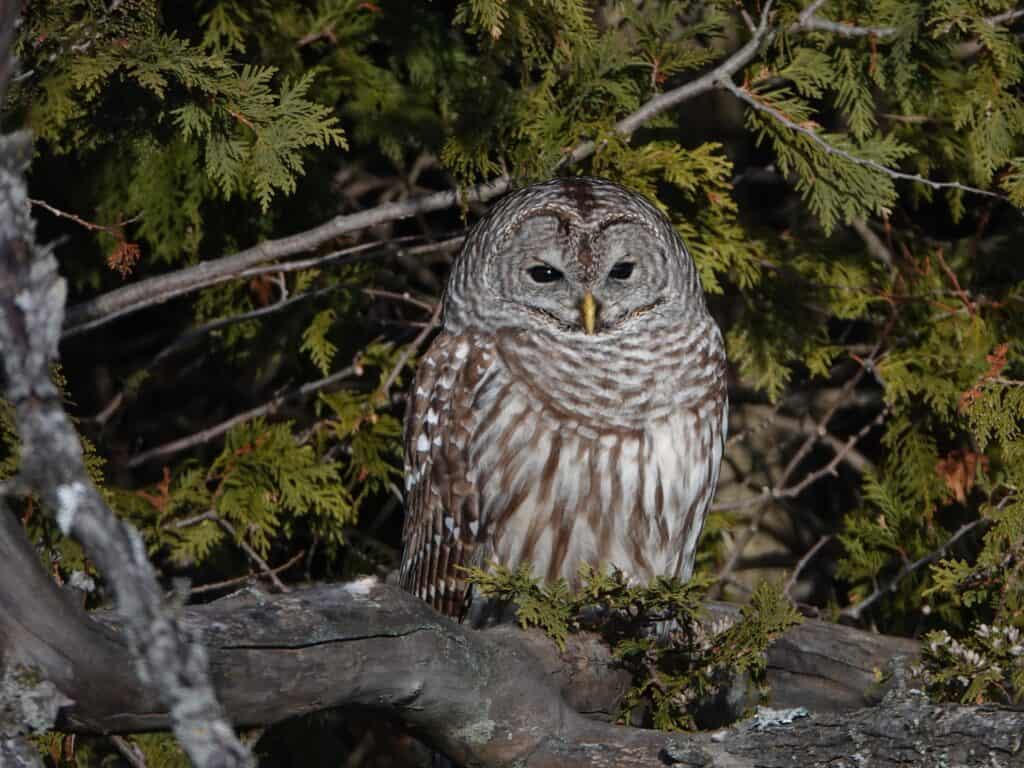
Not only are owls beautiful and enigmatic, but they have senses that seem other-worldly. They can hear and pinpoint the location of the faintest sound – a vole moving under the snow, for example – thanks to special face and ear adaptations. An owl’s face is shaped like a radar disk for guiding sounds into the ears. But, unlike other birds, an owl’s ears are not symmetrical. One ear opening is located higher on the head than the other. This means that owls hear the same sound at slightly different times – in millionths of a second! The owl’s brain then translates this difference into a three-dimensional image of the space where the sound source is located. When the bird flies in for the kill, its talons grab the hapless victim with uncanny accuracy.
Owls were no less than my portal into a life-long love of birds. When I was 12 years old, a rare northern hawk-owl took up residence in our backyard on Wallis Drive. For three days in a row, it sat on a pole oblivious to my presence. At about the same time, I found a dead boreal owl on Parkhill Road. My mother encouraged me to send the bird to the Royal Ontario Museum. I received a lovely letter back from Ontario’s pre-eminent ornithologist at the time, Dr. James Baillie. That acknowledgement meant the world to me.
Fast-forward 56 years and I still find owls as enchanting as ever. This winter, we’re seeing more of these birds than at any time in recent memory. The four species providing most of the entertainment are the barred (not BARN), northern saw-whet, short-eared, and snowy owls. Most have arrived from northern Ontario, but snowy owls have travelled here all the way from the Arctic. Two resident species, the eastern screech-owl and the great horned, are also part of the show.
At least one northern hawk-owl, along with a long-eared owl, also showed briefly before deciding to move on. In fact, the only possible species we haven’t seen this winter are the boreal and great gray owls. Readers may remember the “irruption” of 2004-2005 when a hundred or more great grays descended upon the Kawarthas.
Huge interest
I don’t recall a winter in which there’s been so much public interest in birding and especially in seeing owls. Almost every time I’ve gone to one of our local owl “hotspots”, other people have been there. On Moncrief Line, for example, there’s often a dozen or more spectators taking in the late afternoon flight of the short-eared owls. It may also be that people are seeing and reporting more owls because so many more of us are outside walking, skiing, or simply going for a drive to escape pandemic-induced cabin fever. A greater connection with nature and increased concern for the environment will hopefully be one of the pandemic’s more positive legacies.
Why so many?
The quick answer as to why we’re seeing more owls than usual is an abundance of prey species locally and a lack of food in the north. Numbers climb even higher in the winter following an especially successful breeding season. Clearly, last spring produced a bumper crop of baby owls.
In years when owls do move south, they often remain all winter in areas where they find abundant small mammals like voles, mice, and shrews. This is an especially good year for meadow voles in the Kawarthas. Many owl watchers have remarked upon the number of voles they’ve seen simply scurrying around in the grass!
The stars of the show
The most abundant species this winter has been the barred owl. Barred sightings always increase in the late fall and winter, but this year’s numbers are much higher than usual. A friend told me he’s already seen 14 different individuals. Not all have arrived from the far north, however. Barred owls that are resident to the Kawarthas expand their own hunting territories in the late fall and winter. This sometimes brings them right into Peterborough. Some even show up at feeders where they prey on birds and nocturnal rodents.
However, it’s the snowy owl that’s probably elicited the most high-fives in recent weeks. This is a species we see most years but usually more so in the Lindsay area. When snowies find a rodent-rich territory, they will often stay put for a month or more. Darkly-marked immature birds are those most often seen.
As for the most dependable owls to observe, the honour goes to the four or five short-eareds at the Peterborough Airport. They put on their own “airshow” every day in the late afternoon, and there’s always an enthusiastic audience watching and photographing them. To add to the excitement, this species is extremely rare in our area.
How to see them
The following are some guidelines and a recommended location for finding each species. You can also go to eBird at https://ebird.org/region/CA-ON-PB?yr=all for other owl sightings.
- Barred: along country roads, usually (but not always) in the early morning and late afternoon. Scan telephone poles, wires, and exposed branches. (Selwyn 5th Line)
- Great horned: sometimes seen in silhouette on an exposed branch at twilight. Listen for deep hoots at night. (Trent Wildlife Sanctuary near 9th Line)
- Screech: peering out of a hole in a tree. Listen at night for a “trilling” call. (east end of Mervin Line)
- Snowy: perched or on the ground in an open field. (County Road 24 between 5th and 6th Lines)
- Short-eared: flying in late afternoon. (field at east end airport as seen from Moncrief Line)
- Saw-whet: roosting in a cedar or spruce tree. It’s presence is often betrayed by the calls of a mobbing flock of chickadees. Listen for its “too-too-too-too…” call at night (conifers in Rotary Park at west end of Hazlitt Street)
Should you find an owl, please avoid disturbing the bird by causing it to continually fly off. This takes time away from feeding, and the owl may get struck by an on-coming car. If you come across an owl when you’re driving, stay in the car and approach slowly, as long as traffic conditions make it safe. You should be able to get close. Finally, don’t forget your binoculars and camera, because, come spring, these northern visitors will be gone.
Climate Crisis News
HOPE: Energy-From-Waste
A proposed Energy-From-Waste facility to eliminate landfills is a wonderful example of how local citizens are taking action to address the climate crisis. Landfills are the source of nearly one-quarter of Canada’s methane gas emissions. Methane is 25 times more potent a greenhouse gas than carbon dioxide. Thirty-three Energy-From-Waste facilities are already operating in Sweden, despite the country’s small population of only 10 million. By contrast, Canada has a population of 37 million, thousands of landfills, and only three such facilities. In Peterborough, a group of 18 professionals is recommending a regional facility to service five counties. It would get rid of 78 landfills, produce an annual profit of $5 million, and reduce annual greenhouse gas emissions by 160,000 metric tonnes. The facility would be modelled on the existing Energy-From-Waste plant in Clarington. For more information, contact Ed McLellan at el.mclellan@sympatico.ca or at 705-748-3923

To see a list of ways YOU can take action on addressing climate change, go to https://forourgrandchildren.ca/ and click on the ACTION button.
